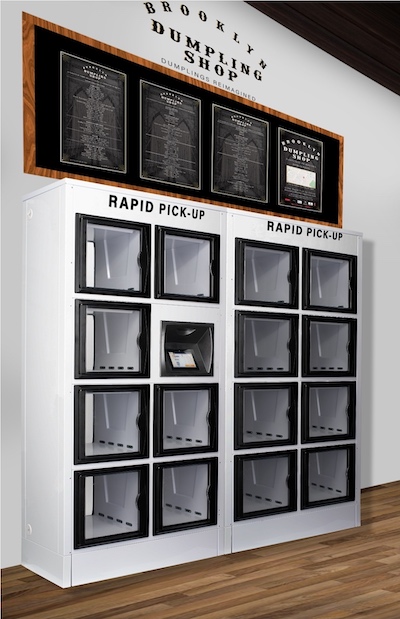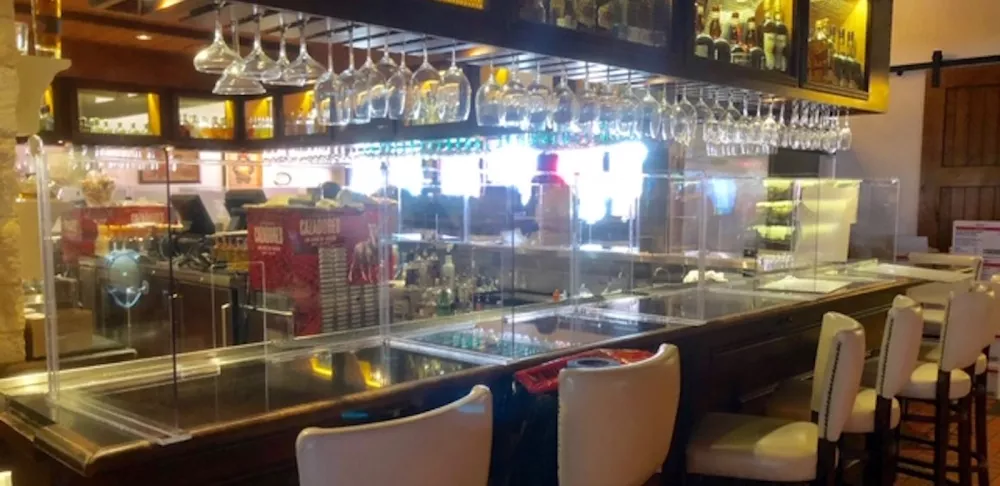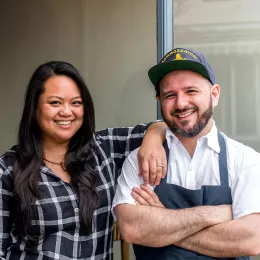While accommodating a fraction of capacity and adhering to CDC, state and restaurant association guidelines, restaurant owners and operators are ensuring that diners and staff feel safe with strategic creativity and touch-free technology.
People are leaning toward whatever they possibly can to generate new business and make people feel as safe as possible. Some restaurants are using shower curtains between tables for separation, some are simply separating tables by six feet, and others are using mannequins or blow up toys to make a dining room feel full despite empty tables.
Clear, plastic protective covers called Plex’eat, designed by Christophe Gernigon, went viral at the end of May after being showcased at a restaurant called H.A.N.D in Paris. Preorders for Plex’eat are apparently rolling in.
In Houston, Texas, Arnaldo Richards' Picos Restaurant installed plexiglass barriers along the bar. “We’ve been open for 36 years and have a very popular bar, we are known for our margaritas, so we wanted to put the plexiglass in,” Executive Chef and Owner Arnaldo Richards said. “So far, people love it.”
"Restaurants are definitely using this time to think creatively about their operations," says ICE alum Jessica Abell (Culinary/Management, '14), head of projects and client experience at Oyster Sunday, a corporate office for independent restaurants. "One of the most creative uses of space I’ve seen is Mediamatic ETEN in Amsterdam, where they’ve built individual glass rooms for each table."
Chef Eric Ripert of three-Michelin-starred Le Bernardin in New York told the Wall Street Journal he’s planning to use open space to cook in front of guests. And Quality Branded restaurants, like Quality Eats and Quality Italian, are planning to pump out a recording of what a restaurant sounds like through speakers.
Stratis Morfogen, owner of Brooklyn Chop House, planned to open Brooklyn Dumpling Shop in late summer and has had to adjust accordingly.
“I wanted to do a 24-hour bakery for dumplings, taking traditional sandwiches we had at Chop House and turning them into dumplings,” he says. “When COVID-19 hit, some friends mentioned automats, so I started reading about the creators of the automat.”
Automats are fast-food restaurants run kind of like a vending machine, where diners don’t see or interact with staff. They first started in 1895, and what got Stratis' attention was that after the Spanish flu, automats grew from two stores to 36 stores. Then he wondered why they went out of style.
“Technology failed the automat because when meals started to be two or three dollars, people didn’t have that much money in their pocket,” he says. “Now technology isn’t just here, technology can make it into an even better model.”

The plan for Brooklyn Dumpling Shop is to have a touchless self-ordering kiosk, from the company Tray, where guests can hover their fingers over what they want to select and the screen detects the heat. Payment can be made by credit card or Apple Pay. A mobile barcode will open two separate lockers, one with food and one with drinks, neither of which require touch.
The touchless factor is something other restaurants are trying to implement. The company Presto, which provides technology at chains like Applebee’s, Chili’s Grill & Bar, Denny’s, and Outback Steakhouse, has garnered interest in its QR codes for tables to replace menus that customers need to touch. Non-chain restaurants from fast food to fine dining are drawn to Presto’s tech, perhaps for some of the company’s more advanced offerings like Computer Vision Technology. This AI-powered tech was initially meant to help restaurants measure wait times, guest bounces and guest experience scores in real-time. Now the functionality can help with measuring social distancing and restaurant capacity and communicating those findings with partners and stakeholders.
To get started, Presto has put together a Contactless Dining Kit, which allows guests to use their personal mobile devices to scan NFC tags and QR codes at restaurants to view the complete menu, place orders, and pay with their phone at the table — without the need to touch any foreign surface or come into contact with people outside of their dining party.
“It has been about a month since we launched the Presto Contactless Dining Kit,” says Founder and CEO Rajat Suri. “We were thinking hard about how to best help the restaurant industry get back on its feet again during the pandemic. We took learnings from research of other countries that were ahead of the curve in COVID-19 recovery to determine what new consumer demands and state restrictions might look like and combined those with our already existing order-and-pay technologies to create the kit.”
QR codes are working well for many restaurants so far. Chris Shepherd, chef and owner with Underbelly Hospitality, says that two of Underbelly’s restaurants, Georgia James and One Fifth Mediterranean, are open at 50% capacity and have QR codes that lead to a food, cocktail and wine menu.
“Some guests think it’s awesome but some want a regular menu so we give them a paper one we don’t reuse,” Chris says.
Otherwise, he is trying to get creative with social distancing since for now, the dining room feels empty. He ordered 4x4-foot tempered glass dividers manufactured by Fullbrightco from a Houston dealer named Letourneau Keller.
“They break up airflow, and you can’t see them unless you look down. They’re mobile so we can move them around and they don’t break,” Chris says. “It’s basically like a clear fence but it doesn’t hide you from anything and it adds comfort.”
Chris admits some of his staff thinks he’s going over the top, but he wants to do whatever he can to make employees and guests feel safe and comfortable. He has heat sealers for silverware for every guest and small mist spray bottles branded with Underbelly Hospitality stickers and filled with hand sanitizer for every guest to take home.
"If you’re reopening your doors and taking all of the necessary steps to ensure a safe environment, you should be communicating that to your guests at every touchpoint — your website, social media, email newsletter and reservations platform," Jessica advises.
Learn more about food business strategies and develop your own business plan in Restaurant & Culinary Management.




